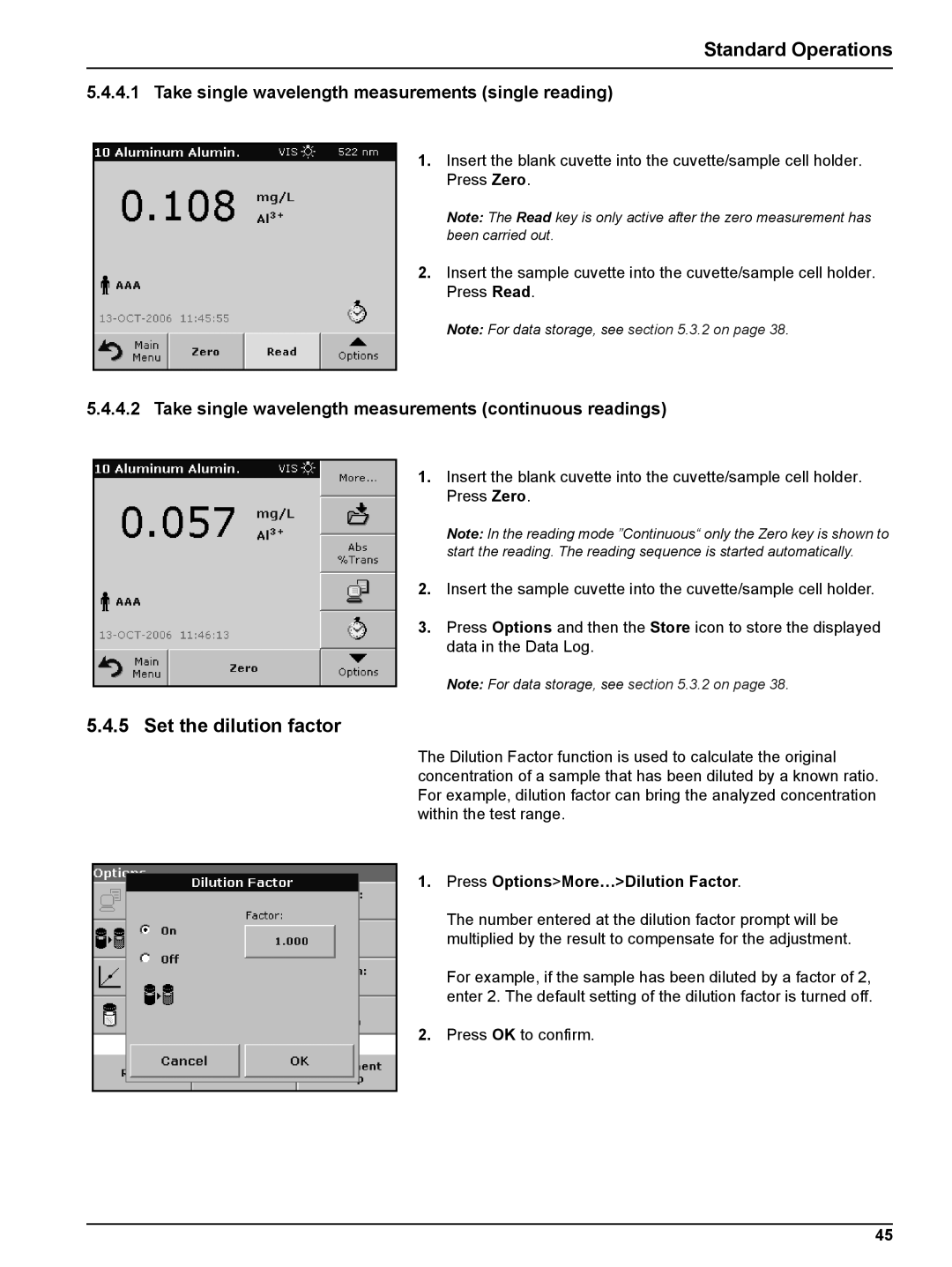
Standard Operations
5.4.4.1Take single wavelength measurements (single reading)
1.Insert the blank cuvette into the cuvette/sample cell holder. Press Zero.
Note: The Read key is only active after the zero measurement has been carried out.
2.Insert the sample cuvette into the cuvette/sample cell holder. Press Read.
Note: For data storage, see section 5.3.2 on page 38.
5.4.4.2Take single wavelength measurements (continuous readings)
1.Insert the blank cuvette into the cuvette/sample cell holder. Press Zero.
Note: In the reading mode ”Continuous“ only the Zero key is shown to start the reading. The reading sequence is started automatically.
2.Insert the sample cuvette into the cuvette/sample cell holder.
3.Press Options and then the Store icon to store the displayed data in the Data Log.
Note: For data storage, see section 5.3.2 on page 38.
5.4.5 Set the dilution factor
The Dilution Factor function is used to calculate the original concentration of a sample that has been diluted by a known ratio. For example, dilution factor can bring the analyzed concentration within the test range.
1.Press Options>More…>Dilution Factor.
The number entered at the dilution factor prompt will be multiplied by the result to compensate for the adjustment.
For example, if the sample has been diluted by a factor of 2, enter 2. The default setting of the dilution factor is turned off.
2.Press OK to confirm.
45
